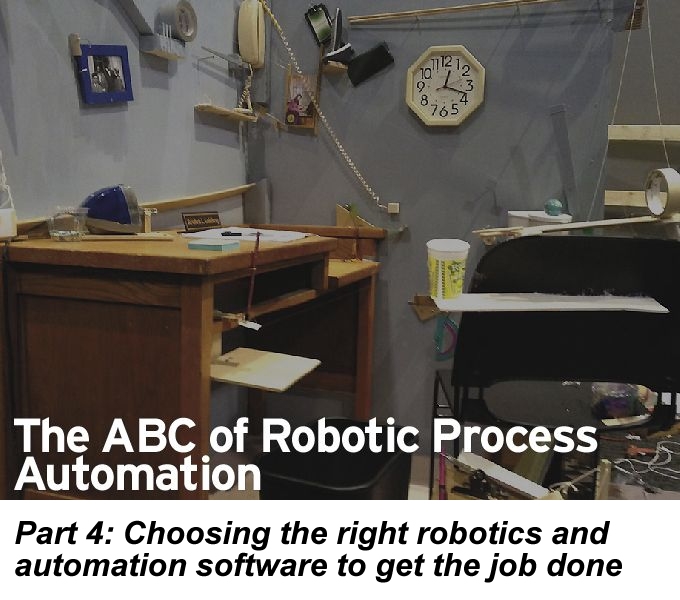In part four of the ABC of RPA series, we discuss how to choose the right software to suit your automation requirements.
Rita Brunk | Genfour
Identifying the right automation software is crucial to the success of your organization’s project, so it’s vital that you conduct a thorough evaluation before deciding on which tool to use. The best robotic process automation vendor in the world can’t compensate for software that’s ill-suited to the customer’s needs. In part four of the ABC of RPA series, we discuss how to choose the right software to suit your automation requirements.
.jpg)
All software is not created equally
Not all robotics and automation software will be suitable for your organization. So, what attributes should you look out for?
1. Easy, effective user experience
Robotic process automation tools typically integrate with your existing systems, and are IT system and process agnostic. This means that the software is quick to build and straight forward to implement regardless of the system they are interfacing with.
2. Flexible developer experience
While business users may be able to configure automation without using code, the configuration itself is based on code. The automation software should enable a developer to extend or alter that generated code if necessary.
3. Scalability
Once the robotic software has been configured and successfully tested, it should be able to support a rapid replication of the same configuration across other machines. Flexible scalability enables companies to meet process volume requirements quickly by deploying hundreds of robots, then scale back down to tens, or as required. A reputable software product should have the capability and track record for this functionality.
4. Analytics
Reliable automation software must collect specific workflow metrics for analysis to show how processes and data interfaces can be optimized for better operational performance.
Let a services provider help you evaluate multiple vendors
The majority of robotics companies are software providers. They are, therefore, looking to sell you a license, or even an enterprise license, which for large companies can go beyond the $1M figure. A better option is to go to a robotics services company, where you will not be tied down to a specific robotics software. Try more than one software product and if, down the road, after you have implemented at least a half dozen robots with specific software, you may choose to stick with one software product. Making the choice up front is both costly and a big gamble.
Can one software solution satisfy all my needs?
Robotics and automation software does not come in a ‘one-size-fits-all’ option. Some software is better suited to assisted processes, and others are better for unassisted processes. Where some software solutions are better for large volumes of data, others are better for financial transactions. In addition, some of the software solutions in the market cannot generate the full robotic development without adding some amount of visual basic programming. Again, this is why you should try BEFORE you buy.
Look out for our fifth blog in the ABC of RPA series, where we will define the cost of automation, and how to justify it to your leadership team.
 About Genfour
About GenfourGenfour provides a fully managed, digital workforce that consists of robotic process automation, cognitive technology and attended desktop automation. Our workforce rapidly automates your repetitive, rules-based processes, to deliver the most valuable and predictable outcomes for your business.

Rita Brunk is the Robotics and Automation Transformation Lead for the US at Genfour, the robotic process automation (RPA) and AI delivery specialist. Rita has seven years of automation experience within a shared services environment, which developed to incorporate robotics tools.
Prior to joining Genfour, Rita led a global shared services effort at Hewlett Packard for robotics. She opened and closed various captive shared services sites outside of the US, and several sites under her responsibility won SSON Excellence Awards for value creation in a mature shared series centre.
For the past 15 years, Rita has held a number of executive positions in a captive shared services environment focused on process optimisation and the development of analytics within the finance, HR, logistics, procurement and marketing functions. During this time, Rita oversaw large teams located in Michigan, India, Costa Rica, Argentina and Mexico. For the last two years, she led global efforts to reduce headcounts across all locations, implementing RPA to drive this progress.
The content & opinions in this article are the author’s and do not necessarily represent the views of RoboticsTomorrow
Comments (0)
This post does not have any comments. Be the first to leave a comment below.
Featured Product


